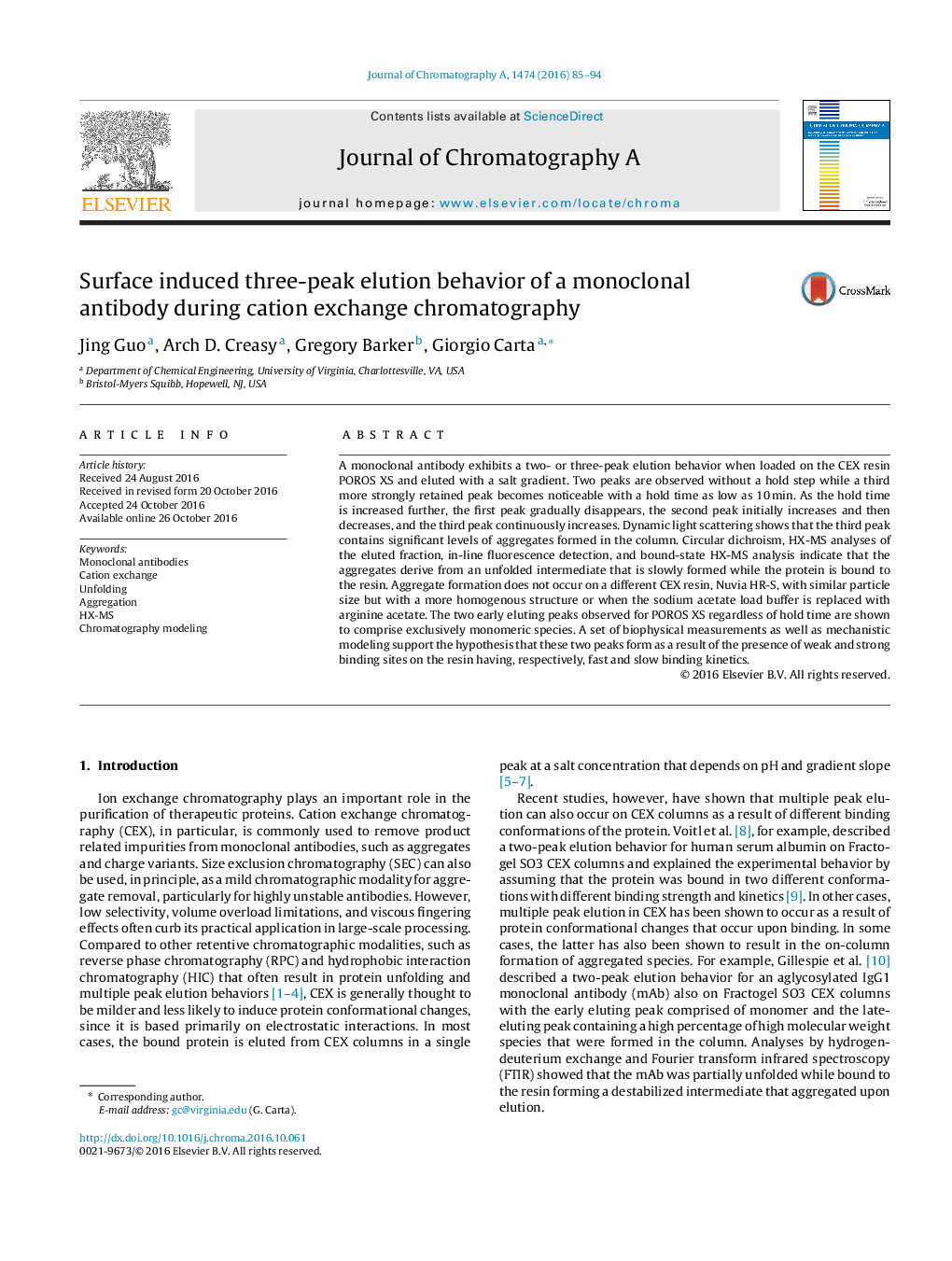| کد مقاله | کد نشریه | سال انتشار | مقاله انگلیسی | نسخه تمام متن |
|---|---|---|---|---|
| 5135770 | 1493452 | 2016 | 10 صفحه PDF | دانلود رایگان |
- A mAb exhibits a three-peak elution behavior on the CEX resin POROS XS.
- Heterogeneous binding on the resin causes elution of monomer in two peaks.
- On-column formation of mAb aggregates causes the third peak.
- HX-MS shows that unfolding of mAb leads to aggregate formation.
- Replacing POROS XS with the CEX resin Nuvia HR-S prevents multiple peak elution.
A monoclonal antibody exhibits a two- or three-peak elution behavior when loaded on the CEX resin POROS XS and eluted with a salt gradient. Two peaks are observed without a hold step while a third more strongly retained peak becomes noticeable with a hold time as low as 10Â min. As the hold time is increased further, the first peak gradually disappears, the second peak initially increases and then decreases, and the third peak continuously increases. Dynamic light scattering shows that the third peak contains significant levels of aggregates formed in the column. Circular dichroism, HX-MS analyses of the eluted fraction, in-line fluorescence detection, and bound-state HX-MS analysis indicate that the aggregates derive from an unfolded intermediate that is slowly formed while the protein is bound to the resin. Aggregate formation does not occur on a different CEX resin, Nuvia HR-S, with similar particle size but with a more homogenous structure or when the sodium acetate load buffer is replaced with arginine acetate. The two early eluting peaks observed for POROS XS regardless of hold time are shown to comprise exclusively monomeric species. A set of biophysical measurements as well as mechanistic modeling support the hypothesis that these two peaks form as a result of the presence of weak and strong binding sites on the resin having, respectively, fast and slow binding kinetics.
Journal: Journal of Chromatography A - Volume 1474, 25 November 2016, Pages 85-94
